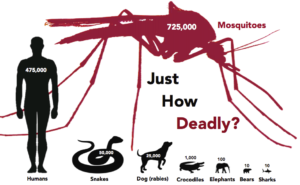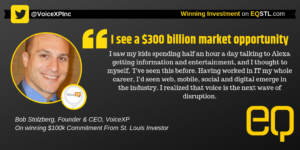
Presented by Prosper Women Entrepreneurs
Where Health and Technology Come Together: Meet Smart Monitor
In the rising age of wearables, have you ever wondered just what these devices can significantly do for our health?
In the rising age of wearables, have you ever wondered just what these devices can significantly do for our health? Sure, the devices can arm us with the information we need to lose weight, or drink enough water, but what do they offer us in terms of saving and improving lives for those with serious health conditions?
Smart Monitor is a company that aims to use technology to benefit health and safety, not just through access to information, but with monitoring abilities that can potentially save the lives of people who suffer from chronic health conditions, like epilepsy and seizure disorders.
Its product, SmartWatch, doesn’t just tell time, but can detect the movements of the user and will send out alerts to caregivers, family members and doctors when a repetitive shaking motion—like a seizure— occurs. On top of that, the device is able to use patient-generated data to bring science closer to understanding these conditions and identifying better therapies. Bringing together sensor, mobile and cloud technologies with analytics, it’s a wearable that truly performs.
We reached out to Smart Monitor’s founder, Anoo Nathan, to learn more about the company, the flagship product and what role St. Louis plays in the company’s future. We have partnered with Prosper Women Entrepreneurs to tell this story.
What was the inspiration for SmartWatch?
Several years ago, when I was managing a video analytics company, a single mother approached me with a problem that caught my attention. Her teenage son suffered from epilepsy, and she needed better way to monitor him while he slept and while she worked.
Until then, she had set an alarm to go off hourly—day and night—to check on him. I heard from many more family members, and loved ones who desperately needed respite and peace of mind. From our market research, we quickly realized there weren’t any solutions for people prone to seizures and their caregivers so we decided to develop one.
Initially, we started with video detection of seizures, but found this to be limited in scope. We eventually came up with the idea to detect abnormal movements through motion in the limbs, and thus our first product, the SmartWatch, was born.
You’ve been the president and CEO for six years. How has the vision changed in your time with the company?
We began with a solution designed to help people prone to seizures, but we are now moving more broadly into chronic care management.
Developing SmartMonitor’s first product, SmartWatch, has involved a wide range of skill sets—on the technology side and the product side. What has been the journey to development?
As we moved to develop the product, we had some challenges along the way—first, we really wanted to make a product that was socially acceptable for all ages to wear, use and maintain on a regular basis, so we spent a lot of time improving the hardware design so that it would fit into a watch-sized interface.
Additionally, our first version of the SmartWatch had battery life of only 15 hours, which wasn’t sustainable, so it took a lot of work to optimize our technology to get the battery life to be where it is now, which is just over 5 days.
Lastly, the clinical validation cycle is much longer than I was used to in the technology sector, and many of the product development costs in the healthcare space are front-loaded, unlike tech, which presented some challenges.

How are things improving
?
In recent years, wearable devices have become more mainstream, which has definitely helped ease our product into the market. Nonetheless, today’s conversation around the utility of wearables still revolves mostly around wellness and fitness, and we are among the first companies to introduce the idea of wearables for healthcare purposes to help patients manage their chronic conditions and stay safe.
What role has St. Louis played in the development and growth of both the company and the product?
We’re delighted that Smart Monitor was chosen for Prosper Capital’s 2015 Startup Accelerator Program. The community in St. Louis is very friendly to entrepreneurs and Prosper Capital accepts applications for their Startup Accelerator from women-led businesses worldwide.
Our advisors and mentors were very generous with their time, so willing to help by sharing their networks, providing the right introductions to business leaders, venture capitalists, angel investors and potential clients. This has opened up a lot of doors for us to grow our strategic partnerships.
What have you learned about medical innovation in your time with SmartMonitor?
The time is certainly ripe, because there is both huge awareness and strong drive all around—from the consumer side, the clinician side and even the enterprise and organizational side—to change the landscape of healthcare technology in the United States.
What is the future of SmartMonitor? Is St. Louis involved?
St. Louis will always be a key part of Smart Monitor’s story, and we believe it can continue to be a part of our future growth as we expand and develop. We’ve found excellent talent in St. Louis in the areas of marketing and PR and regulatory and compliance issues; we’ve hired interns from WashU. We’re very grateful to St. Louis for these strong, lasting relationships and we hope they will continue to thrive as Smart Monitor grows and expands.










